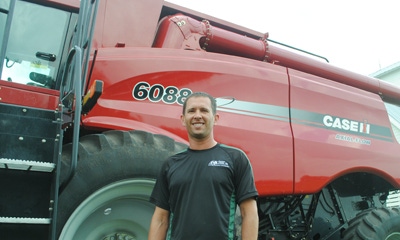
Purchasing seed has changed over the past two decades, so it isn't as simple as it once was. "The days of going to plot tours and having producers say, 'Just give me your best number,' are long over," says Oakland farmer Tony Johanson. "We, as producers, have had to change our mentality when it comes to seed purchases." The new corn and soybean varieties coming onto the market these days have specific fits for varied conditions, he explains.

SEED SELECTION MENTALITY: Selecting corn hybrids and soybean varieties is not as simple as it once was. New seed varieties have specific fits for different conditions, says Oakland farmer and Nebraska Soybean Board director Tony Johanson.
"Plots can be great learning tools for making seed-buying decisions; however, the plots are typically placed on the best parts of the field and are meant to show top yield potential versus the competition," Johanson says. "I have always stressed to producers that when you look over plot data, look at trends across the different environments and not just the plot winner in a local plot. Just because a corn hybrid or soybean variety finishes in the middle or toward the bottom of a plot doesn't mean that it is a bad product. It simply means that this product needs to be managed differently or has a specific fit on a certain acre."
For Johanson, agronomic traits are important to protect yield potential, but he focuses first on selecting the right genetics for every acre out there. That means putting seed genetics ahead of some of the protection traits built into the seed.
Related story: 3 seed buying considerations
About the Author(s)
You May Also Like






